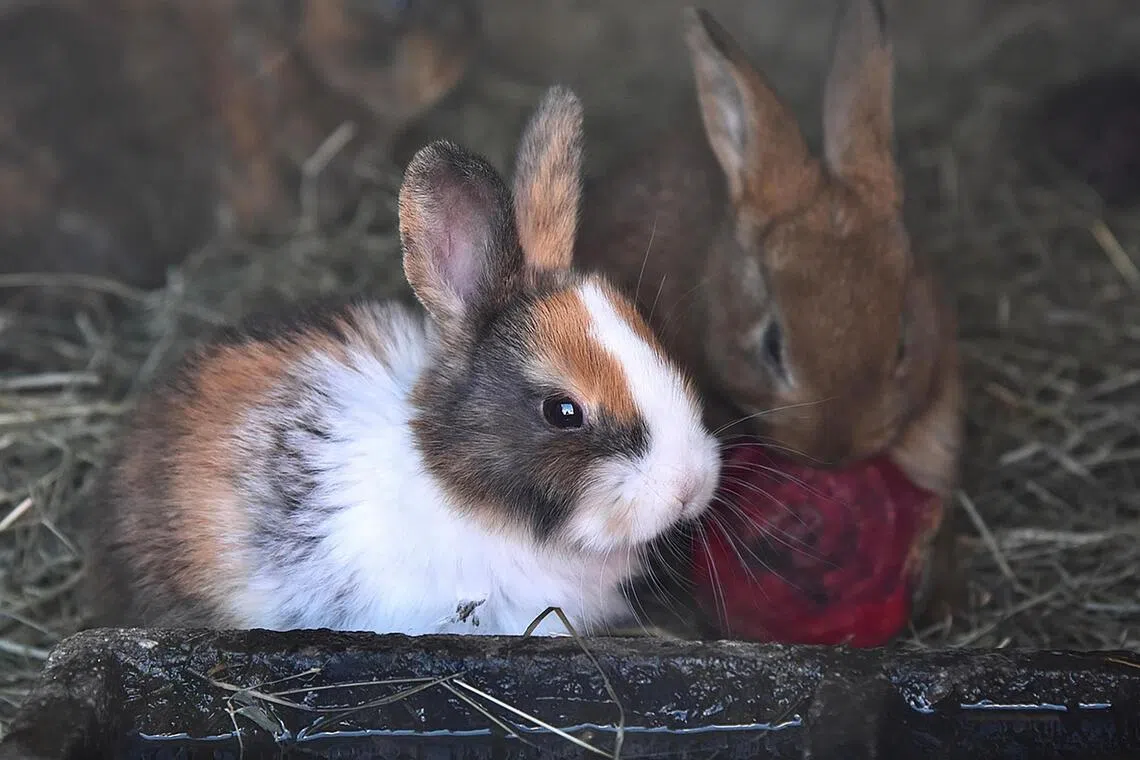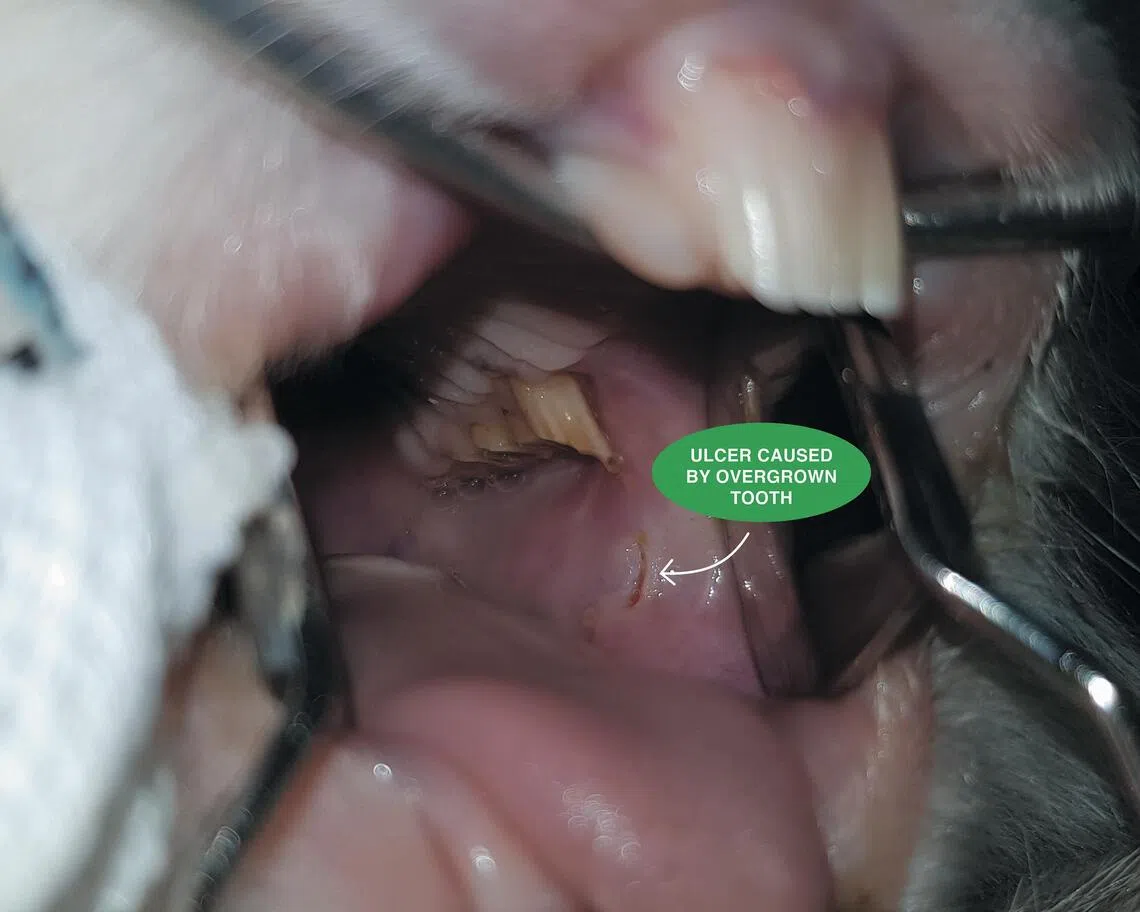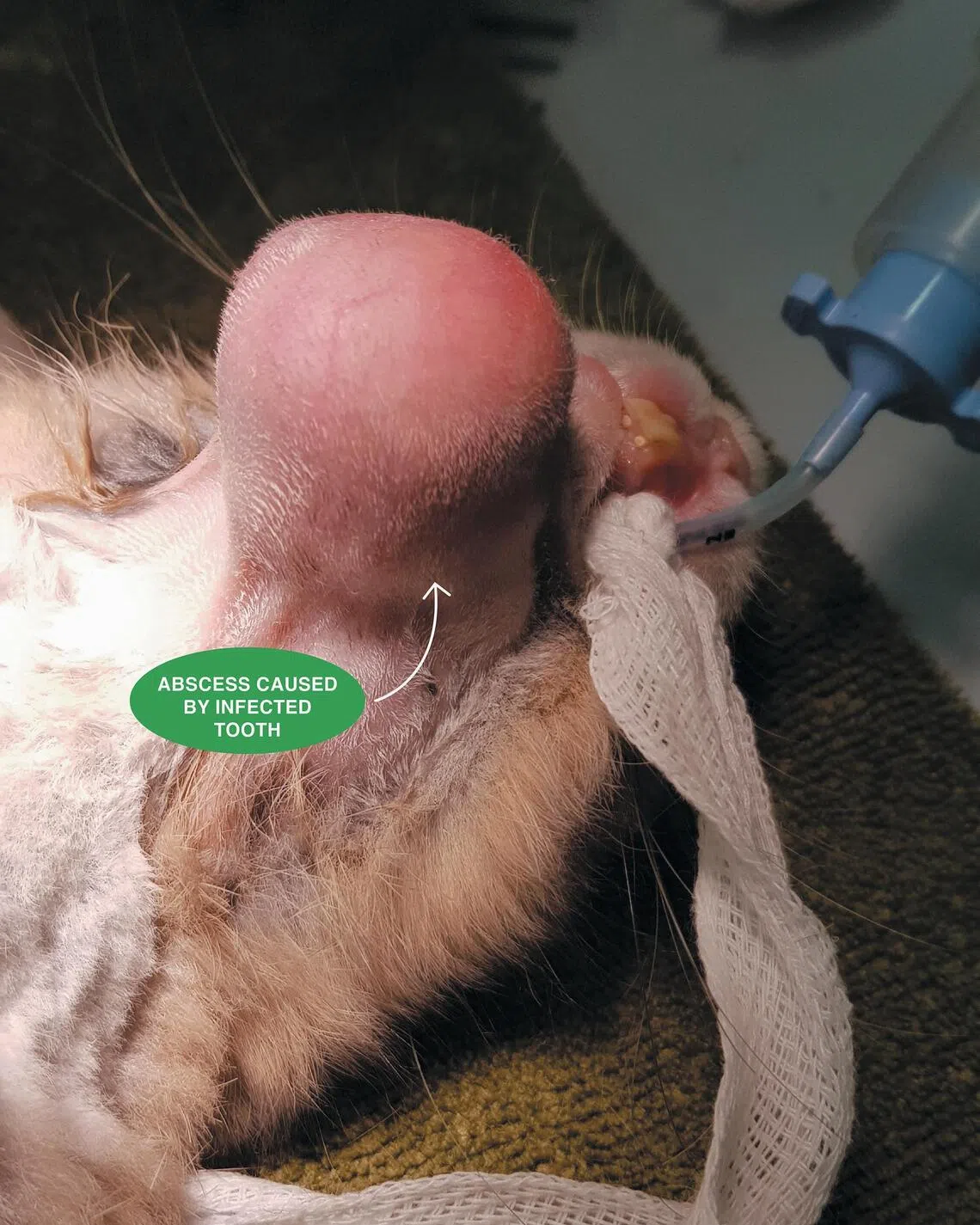Vet Talk: Rabbit teeth grow continuously and dental disease is a major concern
Sign up now: Get ST's newsletters delivered to your inbox

Dental disease is a major concern for rabbits and is increasingly cited as a major cause of death if left untreated.
PHOTO ILLUSTRATION: PIXABAY
Wendy Chee and Christine Ng
Follow topic:
- Rabbits' teeth continuously grow, with incisors growing fastest. Diet impacts growth, and insufficient grinding causes overgrowth and injuries.
- Malocclusion and elongated tooth roots are common dental issues. Untreated problems can lead to dental abscesses, often requiring surgery and antibiotics.
- Early detection is key due to subtle signs. High-fibre diets and UV light exposure aid prevention.
AI generated
Do you know that herbivorous small mammals, such as rabbits, guinea pigs and chinchillas, have teeth that grow continuously throughout their lives?
Different teeth have varying growth rates, with incisors growing the fastest at up to 2.4mm a week.
Factors like age, diet and pregnancy can also influence tooth growth rates. This adaptation supports their fibrous plant-based diet but also makes them prone to dental issues.
Rabbits have 28 teeth in their oral cavity. Without sufficient grinding, teeth can overgrow and cause oral injuries (such as tongue or cheek ulcers), painful eating and even life-threatening infections.
Common rabbit dental problems
One of the most common rabbit dental problems is malocclusion, where teeth do not align properly, leading to overgrown teeth or dental spurs. These can result in sharp edges that cut into the rabbit’s cheeks or tongue, making eating painful.
Dental irregularities in rabbits are commonly caused by genetic factors, poor dietary habits and imbalances in calcium to phosphorous metabolism.
Another common problem is elongated tooth roots, where molar teeth extend into the bone or sinus cavity, causing issues like nasal discharge, watery eyes and discomfort.

Rabbits’ teeth can overgrow and cause oral injuries, painful eating and even life-threatening infections.
PHOTO: COURTESY OF VET CENTRAL
When dental problems are left untreated, they can lead to serious infections called dental abscesses, which may require surgery and antibiotics to treat.
About 90 per cent of facial swellings in rabbits are dental abscesses, which are slow to heal and may involve bone infections (osteomyelitis). This disease causes rabbits to make a thick, sticky pus (called caseous pus) that is hard to drain.
Signs your rabbit may have dental trouble
Rabbits are prey animals, so they are great at hiding pain. Keep an eye out for subtle signs such as:
Refusing hay or taking longer to eat
Phantom chewing or chewing only on one side
When you notice more obvious signs like drooling, weight loss or reduced appetite, the condition may already be in the advanced stages and pet owners should take their rabbit to a vet immediately.

About 90 per cent of facial swellings in rabbits are dental abscesses, which are slow to heal and may involve bone infections.
PHOTO: COURTESY OF VET CENTRAL
Why rabbit dental problems are hard to spot
Rabbits have small, narrow oral cavities, which make examination more difficult, especially in a conscious patient.
A rabbit’s mouth opening is limited as it can open only up to 20 to 25 degrees, making the working space restricted. Specialised hand instruments and equipment are crucial for successful treatment.
While incisors can be easily examined, proper visualisation of the cheek teeth requires anaesthesia and the use of cheek spreaders, mouth gags and tongue depressors.
Spotting dental diseases in rabbits is also challenging because symptoms can be as subtle as a slow change in chewing patterns. Often, rabbits do not show obvious symptoms of dental diseases until the disease has progressed significantly.
How vets diagnose dental problems
To ensure accurate diagnosis and treatment planning, imaging is essential for all dental procedures. Radiographs (X-rays) and cone-beam computed tomography (CBCT) are vital for highly accurate diagnosis and treatment planning.

A cone-beam computed tomography (CBCT) scan is an advanced technique for dental disease management and allows for quicker and more detailed examination of the entire skull.
PHOTO: COURTESY OF VET CENTRAL
CBCT scan is an advanced technique for dental disease management and allows for quicker and more detailed examination of the entire skull.
Preventive care tips
Routine check-ups are highly recommended to ensure early detection of dental diseases to prevent severe complications down the road.
Providing unlimited hay to ensure a high-fibre diet is one way to promote natural teeth wear in rabbits, reducing risks of overgrown teeth.
In addition to diet, rabbits with UV light exposure tend to have a better overall body condition and dentition due to improved calcium absorption.
Dental disease is a major welfare concern for rabbits and is increasingly cited as a major cause of death if left untreated.
Pet owners can help to improve the overall welfare of their rabbits by being aware and attentive to their pet’s eating habits.
Dr Wendy Chee and Dr Christine Ng are co-founders of Vet Central. They are members of the Singapore Veterinary Association.
Vet Talk is a fortnightly column where veterinarians offer advice on pet issues.

